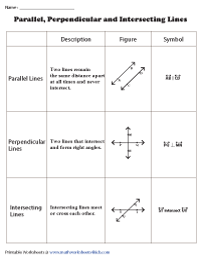

Pythagoras established the Pythagorean School, which is credited with the first proof of the Pythagorean theorem, though the statement of the theorem has a long history. He is credited with the first use of deductive reasoning applied to geometry, by deriving four corollaries to Thales' theorem. In the 7th century BC, the Greek mathematician Thales of Miletus used geometry to solve problems such as calculating the height of pyramids and the distance of ships from the shore. South of Egypt the ancient Nubians established a system of geometry including early versions of sun clocks. These geometric procedures anticipated the Oxford Calculators, including the mean speed theorem, by 14 centuries. Later clay tablets (350–50 BC) demonstrate that Babylonian astronomers implemented trapezoid procedures for computing Jupiter's position and motion within time-velocity space. For example, the Moscow Papyrus gives a formula for calculating the volume of a truncated pyramid, or frustum. 1890 BC), and the Babylonian clay tablets, such as Plimpton 322 (1900 BC). The earliest known texts on geometry are the Egyptian Rhind Papyrus (2000–1800 BC) and Moscow Papyrus (c. Early geometry was a collection of empirically discovered principles concerning lengths, angles, areas, and volumes, which were developed to meet some practical need in surveying, construction, astronomy, and various crafts. The earliest recorded beginnings of geometry can be traced to ancient Mesopotamia and Egypt in the 2nd millennium BC. For example, methods of algebraic geometry are fundamental in Wiles's proof of Fermat's Last Theorem, a problem that was stated in terms of elementary arithmetic, and remained unsolved for several centuries.Ī European and an Arab practicing geometry in the 15th century Geometry also has applications in areas of mathematics that are apparently unrelated. Originally developed to model the physical world, geometry has applications in almost all sciences, and also in art, architecture, and other activities that are related to graphics. Since then, the scope of geometry has been greatly expanded, and the field has been split in many subfields that depend on the underlying methods- differential geometry, algebraic geometry, computational geometry, algebraic topology, discrete geometry (also known as combinatorial geometry), etc.-or on the properties of Euclidean spaces that are disregarded- projective geometry that consider only alignment of points but not distance and parallelism, affine geometry that omits the concept of angle and distance, finite geometry that omits continuity, and others. The geometry that underlies general relativity is a famous application of non-Euclidean geometry. Later in the 19th century, it appeared that geometries without the parallel postulate ( non-Euclidean geometries) can be developed without introducing any contradiction. This implies that surfaces can be studied intrinsically, that is, as stand-alone spaces, and has been expanded into the theory of manifolds and Riemannian geometry. One of the oldest such discoveries is Gauss' Theorema Egregium ("remarkable theorem") that asserts roughly that the Gaussian curvature of a surface is independent from any specific embedding in a Euclidean space. ĭuring the 19th century several discoveries enlarged dramatically the scope of geometry. Until the 19th century, geometry was almost exclusively devoted to Euclidean geometry, which includes the notions of point, line, plane, distance, angle, surface, and curve, as fundamental concepts. A mathematician who works in the field of geometry is called a geometer. It is concerned with properties of space that are related with distance, shape, size, and relative position of figures.

Geometry (from the Ancient Greek: γεωμετρία geo- "earth", -metron "measurement") is, with arithmetic, one of the oldest branches of mathematics.

An illustration of Desargues' theorem, a result in Euclidean and projective geometry


 0 kommentar(er)
0 kommentar(er)
